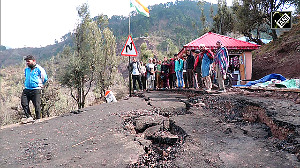Households are likely to remain the primary net lenders to the economy in the coming decades.

With rising incomes, households are expected to gradually rebuild their financial assets, reminiscent of the 15 per cent of gross domestic product (GDP) observed from the early 2000s until the global financial crisis, said Michael Debabrata Patra, deputy governor of the Reserve Bank of India, on Tuesday.
Households are likely to remain the primary net lenders to the economy in the coming decades, patra added.
In India, the household sector typically generates surplus savings relative to its investments, lending the excess to other sectors.
Patra noted that the rebuilding process has already begun, with household financial assets increasing from 10.6 per cent of GDP during 2011 to 2017 to 11.5 per cent during 2017 to 2023, excluding the pandemic year.
Concurrently, household physical savings have also risen after the pandemic, exceeding 12 per cent of GDP, and are likely to increase further, potentially approaching the 16 per cent of GDP seen in 2010-2011.
Going forward, boosted by rising incomes, households will likely build back their financial assets to levels similar to the 15 per cent of GDP observed from the early 2000s until the global financial crisis.
This process has already begun, with household financial assets increasing from 10.6 per cent of GDP during 2011-2017 to 11.5 per cent during 2017 to 2023, Patra said while speaking at the CII Financing 3.0 Summit.
However, he also noted that the net financial savings of households have nearly halved from their 2020-2021 levels.
This decline is attributed to the unwinding of precautionary savings accumulated during the pandemic and a shift from financial to physical assets, such as housing.
Meanwhile, Patra added that the private corporate sector has sizeably reduced its net borrowings due to a combination of rising internal accruals and subdued capacity creation.
However, with the expected revival of the capital expenditure cycle, the sector s net borrowing needs are likely to rise, with funding primarily sourced from households and external resources.
The public sector's net dissaving has been moderating, though unevenly.
Given the crucial role fiscal policy is expected to play in shaping India's future, the public sector will likely remain a net borrower in the economy.
Regarding growth, he said that India s journey from its current GDP levels to those envisioned for 2047 will be supported by higher saving and investment rates, driven by the rise in the working age population.
In the short term, a decade of rapid growth will be essential to build the momentum needed for sustained progress.
Beyond that, even lower growth rates will be sufficient to propel the country forward.
This progress could help India achieve per capita income levels comparable to those of advanced economies, he added.
Sustained by higher saving and investment rates associated with the rise of India s working-age ratio, it will be possible to bridge the gap between today s GDP levels and those projected for 2047, as recently envisioned by NITI Aayog.
This could lead to per capita income levels comparable to those of advanced economies.
From a time varying perspective, a burst of speed is required for about a decade; thereafter, sheer momentum will propel India forward even at lower growth rates, Patra said.
Developing world-class physical infrastructure and creating an environment that fosters innovation, all while advancing towards a greener, cleaner, and healthier nation, will be crucial.
India will need a transformation in its institutional architecture to meet its aspirational trajectory in finance.
The emphasis will be on financing physical, social, and digital infrastructure, skilling, green energy, innovative manufacturing, and micro, small and medium enterprises (MSMEs), Patra said.
He highlighted that India requires infrastructure investment of 8 to 10 per cent of GDP annually but currently faces a gap of 4.1 per cent of GDP, which increases to 5.3 per cent when accounting for climate-related needs.
Between 2024 and 2030, infrastructure investment needs are projected to reach $1.7 trillion, with $0.4 trillion dedicated to green projects.
India will also require nearly $2 trillion in financing for its MSMEs, necessitating alternative funding sources beyond banks.
Additionally, the country must rapidly upskill its young workforce, which will require an annual investment of Rs 2 to 3 trillion over the next six years, he said.
Feature Presentation: Aslam Hunani/Rediff.com












 © 2025
© 2025